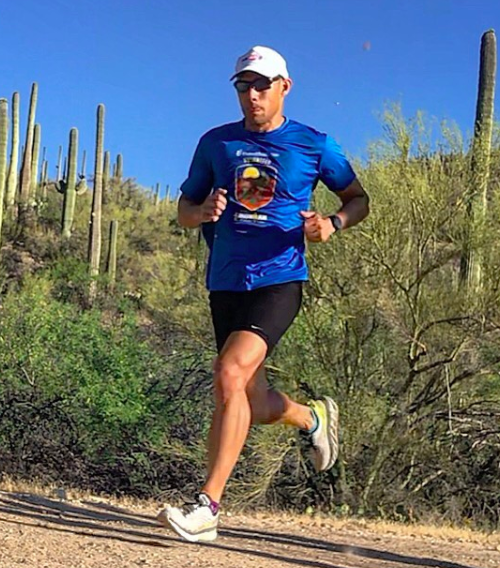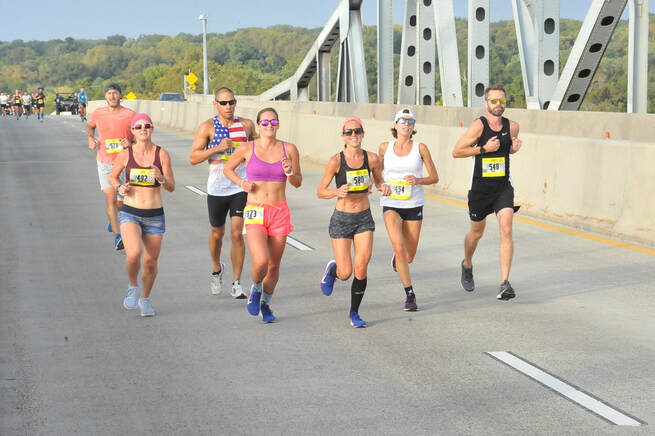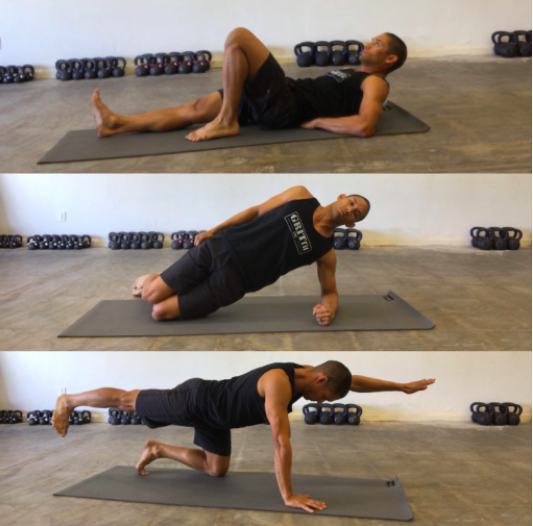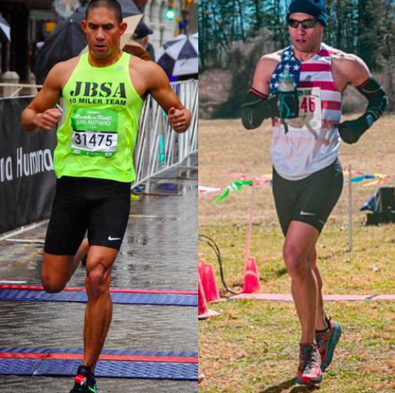|
In Part I we covered some factors that if present would suggest we shouldn’t be running today. In this Part II, we’ll discuss some factors that may offer at least a glimmer of hope. If any of these conditions are present, it doesn’t automatically mean we’re in the clear but it does give us something to work with.
Do your symptoms get better during or after running? Many of you have probably experienced the situation in which you feel pain while walking around or even at rest, but once you start running your symptoms seem to get better. Persistent pain under any situation necessitates caution but the fact you see improvements while moving is a favorable sign. Although this is reason for optimism, we shouldn’t get too greedy because sometimes our bodies can suppress pain signals to get through the physical exertion. Still, any temporary diminishing of pain can help guide us toward a full resolution if we can identify WHY running is making us feel better. Can you run ten minutes with minimal to no symptoms? Ten minutes is long enough to get an honest assessment of our symptoms but not so long that we’re causing any harm if we later find out that we aren’t ready to progress. Also, if you can get through ten minutes or longer of running without symptoms, any reappearance of symptoms later in the run would suggest a training issue related to form or conditioning, not a persistent injury that threatens our ability to run at all. Do you sometimes forget you were in pain? One of my favorite indications of progress. You go to do something that has been causing pain and afterward you have this realization of “wow…that doesn’t hurt anymore.” Maybe you’ve been having back pain and have dealt with the reality of pain while bending forward. Then one day you reach down to tie your shoes and surprisingly don’t feel pain anymore. Subconscious action is often more reliable for pain perception since it lacks the implicit bias of our conscious mind. Does the pain migrate? If your pain migrates, that leads us to believe we’re dealing with a case of irritation rather than diagnosable structural injury. Think of a fracture at one extreme where your pain is typically centered on the spot of the break. That pain doesn’t migrate. You might experience other secondary pains, but pain remains at the site of the break until healing occurs. Migrating pain, on the other hand, is often a sign of the body trying to work through things subconsciously rather than a structure that we risk damaging if we don’t take the needed rest. Do changes to training variables lead to changes in symptoms? Maybe it’s different shoes. Or maybe trails or grass help relieve the pain you’ve been experiencing on the road or track. Perhaps your easy runs feel good but running faster provokes symptoms. They might not be permanent at this point, but first things first. HOW to manipulate these variables is a whole discussion unto itself but for now, recognize that having control over these variables also gives us control of our symptoms.
0 Comments
One of the main questions I get asked as a Doctor of Physical Therapy and running coach is, “Is it ok for me to run??” Some people will take the easy way out and say “Oh, just take a few weeks off.” But any runner knows that’s an entirely unsatisfactory answer, especially when given in a dismissive tone. True, sometimes we DO need some time off, but it should be the LAST resort, not the first option.
Here I’ll go through some “red flags” that can help us determine if we need to avoid running for at least today. Nothing is ever absolute, but if any of these are present, you’d need a very powerful reason to run through the pain… In Part II, I’ll discuss some training factors we can work with to help mitigate the need for excessive time off. Sharp, unrelenting pain - This pain is intense and doesn’t go away, not even when you’re at rest. If it’s that bad, then you probably shouldn’t be running today. Does it hurt when you start running and get progressively worse with running - Rarely does anything good come from trying to push through this situation. If it gets better when we run, then we’re having a different conversation (stay tuned for part II) Do you feel pain with landing AND feel point tenderness in your shin or pubic area - Pain when landing can describe MANY things, so that alone should not automatically take you away from running. But if you’re also experiencing pain that you can specifically pinpoint in one of these two “hot spots,” you’ll want to get imaging to rule out a stress fracture or bone stress injury Does it noticeably change your stride - I recommend a common sense approach for this: if your stride looks painful (meaning the pain is so intense that you can’t even fake your way around it), then we probably shouldn’t be running through the pain. Do you think about it constantly - Think mind-body connection. If the pain is at the forefront of your thoughts and you can’t get your mind off it, your body is telling you something. Have you felt this pain before and unsuccessfully tried to run through it - Use your experience as a guide. Any experienced runner has taken a chance on running through what they consider to be a minor pain. Often it will resolve on its own. But other times we lose our “bet” with our body and the minor pain isn’t so minor. Don’t make the same mistake again (however, the reverse of this isn’t always true…just because you won the bet previously doesn’t give you an automatic free pass…) Do you need a supramaximal dose of pain medication to get through a run – If the pain is that bad, there’s something needing attention. Taking that much pain medication just isn’t a good thing. Look out for Part II where we discuss factors that we can modify to help us work around certain aches and pains… “Shin splints” is one of those broad terms that many people (doctors included) use to describe a very wide range of conditions. In other words, if someone says “shin splints” what they actually mean can be several different things.
Going “by the book,” shins splints is synonymous with “medial tibial stress syndrome” which is basically irritation at the connection between muscle (usually the posterior tibialis) and the tibia (shin bone). Tends to be a repetitive strain condition, but can have underlying causes in mechanics, strength, mobility or training load; or in the case of bone injuries there can be nutrition causes as well. Occasionally, the irritation might be on the muscle itself without any irritation to the bone, in which case it would be some form of posterior tibialis strain or tendinopathy of the posterior tibialis tendon, if closer to the ankle. As for bone injuries, we can have a stress reaction or a stress fracture. The difference is these is basically one of degree. Think of a stress reaction as the beginnings of a stress fracture. Whereas a stress reaction might dissipate within days if given time to heal, a full blown stress fracture can know you out of a solid couple of months. The hallmark sign will be pain/tenderness in a specific spot, whereas many other shin conditions will display pain along a longer segment. On the outside of the shin on the more “meaty” muscle side, we can have anterior tibial tendinopathy or tibialis anterior strain. You may also hear the term “compartment syndrome” which gets tossed around quite liberally referring to pain on the outside of the shin, but full blown compartment syndrome is a true medical emergency, where you’ll experience numbness, loss of circulation and changes to skin texture. The gold standard to diagnose compartment syndrome is to measure the pressure inside the compartment. Sometimes, shin pain isn’t shin pain at all, but is instead nerve pain from the lower back. You could also experience nerve-like symptoms from irritation at the outside of the knee. But in these scenarios, the symptoms are less likely to be associated with movements or direct stress to the lower leg. High ankle sprain is also slim possibility, but unless you’ve had an acute incident of twisting your ankle or lower leg, it’s safe to rule this one out. Ultimately, these diagnoses are simply descriptive labels. Most important is identifying how and why these are happening, but understanding that many different conditions can exist under the realm of “shin splints” is a good way to start! We’re facing a new norm (or at least a temporary one), where courses are headed online. Nonetheless, the opportunity to learn about Reflexive Performance Reset is one that I welcomed, especially as I write this from overseas. I heard about the course form a podcast that Charlie Weingroff did with J.L. Holdsworth, one of the founders of the system and formerly a record setting elite powerlifter. It is also a nice bonus that the online course now offers CEUs, which became extra important this year with opportunities for live education so limited. What is RPR? RPR is a system of daily self care techniques that allows you to instantly feel better, move better and live a better life. Being able to practice on a wide range of body types is always welcomed in any sort of manual course, but for this, I’d say the wakeup drills are so dang simple that I don’t feel like I lost too much by not being able to experience this live. One analogy that they use is of an electrical system. They say nervous system is the electricity of the body; the RPR system tells you where the switches are. (Very similar to the old FMS analogy of the body being a system of “Software” and “hardware.”) With races around the world on hold, most of us have been left to solo time trialing to satisfy our competitive impulses. Although time trials don’t carry quite the weight of a “real” race, we still want to do our best whenever we line up against the clock. And there is something about a true “test” such as a race or time trial to reveal the best estimate of our actual fitness, rather than trying to guess based of workouts.
The first thing to determine is what is the purpose of the time trial? Is it just an extra hard tempo run or is it something more nuanced? In this Corona pandemic landscape, a time trial might be a literal substitute for a race. Basically, a race without all the fanfare and organization, but you’re still going all out as if it were a competition. In this case, you’re giving it everything you have and trying to run the absolute fastest possible time you can run on that given day. In the case of trail racers, this might not be much different than a typical race, as may events require runners to be self-supported and involve many solitary miles in the wilderness. Just because there are no races doesn’t mean the time trial needs to be a literal race substitute. Although predicting race fitness from workouts is an inexact science, it doesn’t mean we need to run each and every time trial 100% effort to accurately gauge. There is still value in going CLOSE to 100%, making the time trial somewhere in between a workout and a race. On some level this is semantics, as what Lydiard referred to as “time trials” more likely resembled tempo runs in our current nomenclature, with the instructions to run approximately 3/4ths effort. What’s your favorite fartlek workout? Fartleks have been a staple of my training for many years, for several reasons. I find them to be more mentally sustainable than having to “answer to the stopwatch” and hitting the track for all speedwork. This keeps me under control and reading by body’s messages rather than being a slave to time and pace. Fartleks are also outstanding for developing feel and self-awareness, two skills in running that are so often neglected these days with the advances in wrist and handheld technology for tracking data. I’ve put together a list of some of my favorite fartlek workouts that I use both for myself and for my athletes. With so many races on hold until next year, this is a great time to use fartlek training to continue establishing that foundation not only of fitness but of healthy running for the long term. When you get ready to prep for specific events in the coming months, you’ll be in a much better position to start getting serious about hitting strict times in training. Always remember, we can’t be in peak form 12 months of the year! Give these a shot and let me know how it goes! If you need a little motivation, here’s some footage of one of the famous Kenyan massive group fartlek sessions “But I don’t want to slow you down…”
Back in the day when people ran in groups pre-pandemic, I’d sometimes meet a new runner and the conversation would inevitably drift toward “we should run together sometime.” This was usually followed by the other person backtracking by saying “yeahhhh, but I don’t want to slow you down.” Then usually I’d try to convince them that we could always do an easy run together, it doesn’t have to be fast. At first glance, you might think that running with people your exact speed would be ideal. The answer, like many things, is IT DEPENDS! In my experience, you can benefit from running with different types of runners…faster, slower and equal! If running with people slower than you…Let the slower runner go at their normal pace and just tag along. This forces you to keep an easy day easy! I’ve used this on many occasions and it often results in enjoyable runs. You can also do fartlek runs where the faster runner circles back during the recovery jogs and both runners start the rep simultaneously. It’s the best of both worlds, as each runner does their own workout at their own pace, but starting each rep together avoids the isolation of a solo workout. Bottom line: Consider implementing the McGill Big 3 for your core training as a runner
Runners often ask what’s the best core exercise? I’ll start with my usual disclaimer that everyone is different, but if you are looking for a broadly generalizable routine, The McGill Big 3 is a great place to start, especially if you have a history of low back instability. Background: the McGill Big 3 includes three exercises based on Professor Stuart McGill’s spine research. After studying probably more exercises than we can count, his research revealed three exercises that stood above the rest for core stabilization. The three exercises are the McGill curl up, side plank and bird dog, which check three key boxes in core functional demands for runners “What’s harder..Road marathon or trail ultramarathon?”
I’ll start by saying neither is “harder” than the other; both are more challenging in their own right. I will say that marathon is a more intense pain but that’s only one metric of “harder.” The marathon inflicts the punishment of repetitive strain being on the road for 26.2 miles, basically using the same muscles in the same way for hours. Some mild hills can create some variety, but that can also make the course slower (we’re assuming that the goal is to compete the courses in your fastest possible time). If the hills get too big, they can punish your quads on the downhills. But regardless, you can expect your legs to be VERY sore after a full effort road marathon, especially if part of the course takes you to concrete. The intensity of the road race is also higher as most competitive runners are working toward the upper half of their aerobic energy system. In the ultra, I was sore but not nearly as sore as after road marathons. To an extent, this shouldn’t be surprising because the ultra included bouts of walking during some uphills when I caught up to people on a single track and also when going through the later aid stations. Additionally, most ultras are contested mainly on soft surfaces, which inflicts less pounding. Add in the technical nature of many ultra courses and you have a recipe to spare your legs a bit…even though you have more ground to cover than on the road. |
AuthorAllan Phillips, PT, DPT is owner of Ventana Physiotherapy Archives
December 2023
Categories
All
|
North Location
(Inside GRITfit)
7980 N Oracle Rd.
Tucson, Arizona 85704
Call or Text: (520) 306-8093
allan@ventanapt.physio
(Inside GRITfit)
7980 N Oracle Rd.
Tucson, Arizona 85704
Call or Text: (520) 306-8093
allan@ventanapt.physio
Central Location
(Inside Bodywork @ Onyx)
2951 N. Swan Rd.
Tucson, Arizona 85712
Call or Text: (520) 306-8093
allan@ventanapt.physio
(Inside Bodywork @ Onyx)
2951 N. Swan Rd.
Tucson, Arizona 85712
Call or Text: (520) 306-8093
allan@ventanapt.physio
Terms of Service (here)
Privacy Policy (here)
Medical disclaimer: All information on this website is intended for instruction and informational purposes only. The authors are not responsible for any harm or injury that may result. Significant injury risk is possible if you do not follow due diligence and seek suitable professional advice about your injury. No guarantees of specific results are expressly made or implied on this website.
Privacy Policy (here)
Medical disclaimer: All information on this website is intended for instruction and informational purposes only. The authors are not responsible for any harm or injury that may result. Significant injury risk is possible if you do not follow due diligence and seek suitable professional advice about your injury. No guarantees of specific results are expressly made or implied on this website.
Proudly powered by Weebly





 RSS Feed
RSS Feed